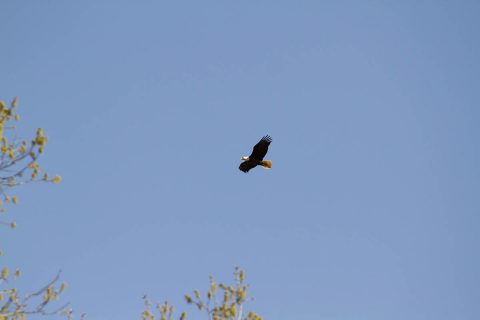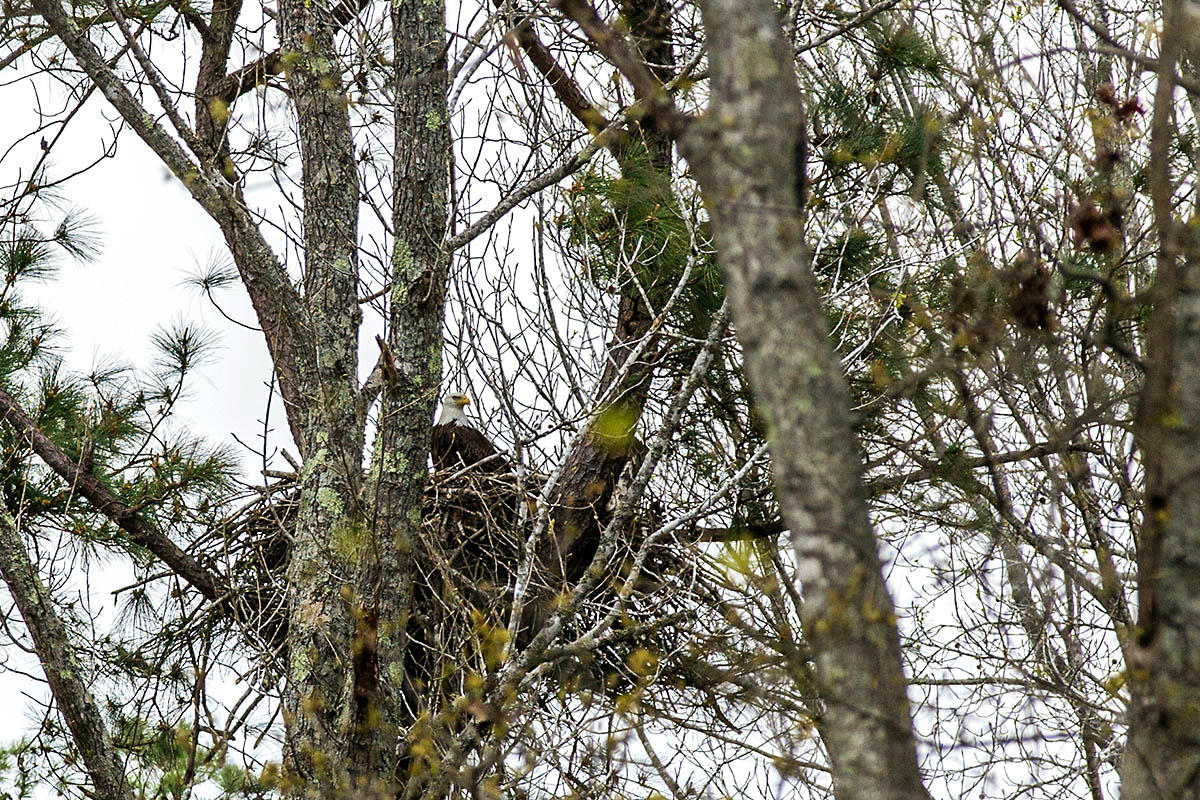Written by Spc. Patrick Kirby
40th Public Affairs Detachment
 Fort Campbell, KY – Fort Campbell Fish and Wildlife officials have confirmed the first nesting of bald eagles on post.
Fort Campbell, KY – Fort Campbell Fish and Wildlife officials have confirmed the first nesting of bald eagles on post.
“We, at Fish and Wildlife have suspected they were nesting in the past, but this is the first confirmed,” said Daniel Moss, avian ecologist with Fort Campbell Fish and Wildlife, that is part of the Directorate of Public Works.
According to the U.S. Fish and Wildlife Service “on August 9th, 2007, the bald eagle was removed from the federal list of threatened and endangered species. After nearly disappearing from most of the United States decades ago, the bald eagle is now flourishing across the nation and no longer needs the protection of the Endangered Species Act.” Eagles are now protected by the Migratory Bird Treaty Act and the Bald and Golden Eagle Protection Act.

“The nest being here speaks well of Fort Campbell, we have a lot of rare species here,” Moss said. “Eagle populations are rebounding, that’s why they took them off the endangered species list in 2007, a lot more are being seen and a lot more nests are being seen.”
Nests are always near large bodies of water that provide the eagles with hunting opportunities for food.
“Lake Kyle is kind of on the small side, but that speaks well on the food sources stocked in the lake,” Moss said.
Eagles’ nests are very large, the size of a Volkswagen, and are typically on strong trees, high above the canopy. The on-post eagles’ nest is being monitored by Fort Campbell Fish and Wildlife biologists.
“We will monitor the nest until completion,” Moss said. “Between 74 to 80 days from when the eggs hatched. Usually the eagles lay two eggs at a time – asynchronous hatching, so one eaglet is bigger than the other.” The nest’s location is in the middle of a training area. Post biologists have devised a plan to protect the eagles, while making training in the area possible.

“Mission is always first for us, but we also have federal laws we are dealing with when it comes to the eagles,” said Gene Zirkle, Fort Campbell Fish and Wildlife program manager, Directorate of Public Works environmental division. “We have made a buffer zone around the nest to have as little impact on the mission as possible. We also don’t want to harm or disturb the eagles.”
Post biologists are starting from scratch with this plan as it is the first nest they have found in a training area.
“We have to take it conservatively this year with the buffer zone,” Zirkle said. “Next year though we may be able to make the buffer smaller, once we know how the eagles react to Soldiers training.
The bald eagle was made the national symbol of the United States in 1782, and also is the symbol of the 101st Airborne Division.
There have been bald eagle sightings at Fort Campbell for the past few years, but those birds appear to have been transient.
“As the bald eagle population in Tennessee continues to grow, I expect they will continue to expand into areas where they haven’t been known to nest in the past few decades,” Woltmann said. “I appreciate what the Fort Campbell [Directorate of Public Works], environmental department does for bird conservation on the base.”
Bald eagles are an indicator of a healthy ecosystem, they show that the water is clean and that fish and winter water fowl populations are doing well.
“Bald eagles generally eat fish that they catch or scavenge, but will take lots of other things if they are readily available,” Woltmann said. “Bald eagles mostly eat things a good deal smaller than household pets. Threats to bald eagles include lead shot, which still poisons eagles every year, and people, who still persecute them. Bald eagles are a great success story, in that it’s not often that one can safely remove a species from the endangered species list.”



